
views
Mastering Basic Letters

Name letters of the alphabet. To get started with phonics, you need to learn the all the letters of the alphabet. Start by learning the basic letter names. Letter sounds will come easier when you can name the letters that match the sound. Videos and picture books are often helpful, especially for younger kids. For adults, charts and puzzles can be useful tools. You can find phonics learning resources for all ages online, as well as in many bookstores.
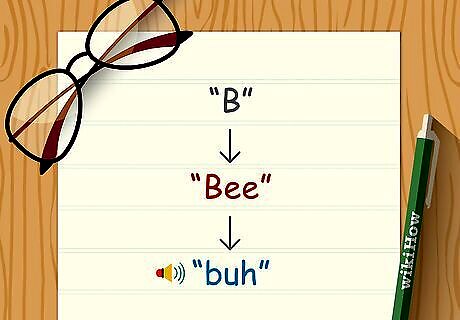
Associate sounds with each letter. Once you can name each letter, learn the sound associated with it. For example, the name for the letter B sounds like, “bee,” but the sound for that letter is closer to “buh.” Just as with learning letter names, learning letter sounds is generally easiest when you have examples. Videos and read-along book with press-and-play buttons are useful for learning letter sounds.
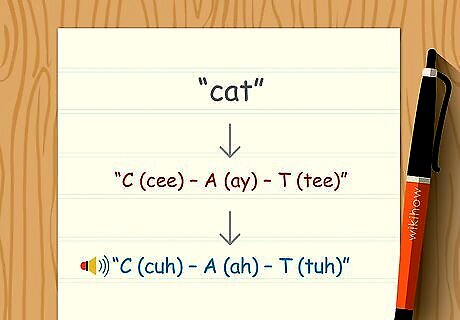
Sound out simple words. When you know the sound that goes with each letter, you’re ready to start sounding out simple words. Start with 2- and 3-letter words like “at,” “cat,” and “dog.” Go through the word letter by letter and make the sound each letter makes, then put them all together. Don’t use the letter names, as these won’t give you real words. For example, the letter name for the word “cat” are “C (cee) – A (ay) – T (tee).” Putting those names together doesn’t make a word, though. Instead, use the letter sounds, “C (cuh) – A (ah) – T (tuh).” When you put those together, you can hear the word “cat.”
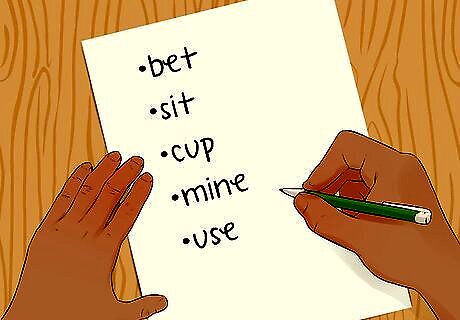
Practice different combinations of the same letters. Letters like ‘m’, ‘a’, ‘s’, ‘t’, and ‘i’ are common and very versatile, so they make a great group to learn with. Try putting together different letter combinations and sounding them out to see if you can make words. Make a cardstock cutout of each letter to turn making words into a game. Rearrange the letters and add or subtract them as necessary to create different combinations and sound out new words.
Tackling Vowel Letter Sounds
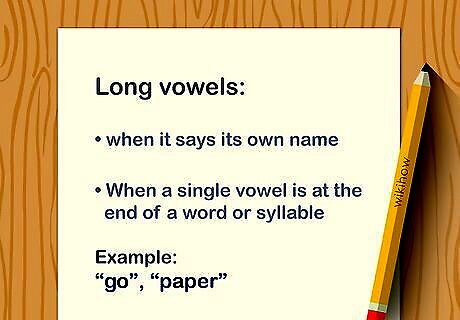
Learn the long form of each vowel. The letters A, E, I, O, and U are all vowels, and each vowel has a long sound in addition to its regular sound (also called the short sound). The long sound makes a vowel say its own name. If 2 vowels sit next to each other in a word, the second vowel makes the first one say its name. For example, the word “flea” sounds like “flee” because the ‘a’ makes the ‘e’ before it says its name. Long vowel sounds also occur when the vowel is at the end of a word or syllable. “Go,” for example, has a long ‘o’ at the end.
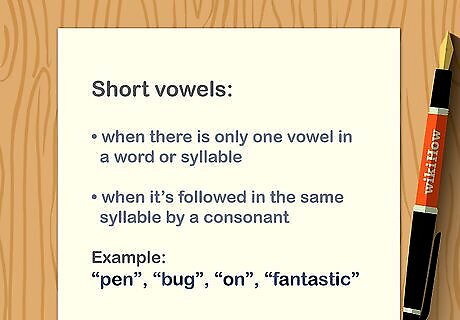
Make short vowel sounds when a word or syllable ends with a consonant. All the letters that aren’t vowels are consonants. A vowel makes its short sound when it’s followed in the same syllable by a consonant. In “pen,” for example, the ‘e’ makes an “eh” sound because it’s the only vowel. Vowels are also generally short when they are the only vowel in the word, so long as they don’t come at the end of that word. For example, in “bug,” the ‘u’ makes the short “uh” sound.
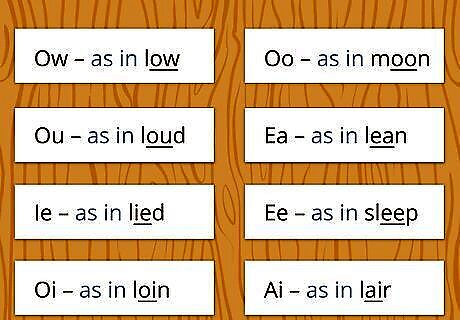
Practice putting vowels together in diphthongs. Diphthongs are a special type of vowel sound that is formed when 2 vowels sit next to each other. Each diphthong is unique, so it takes some practice to memorize them. Common English diphthongs include: Ow – as in low, bow, show Ou – as in loud, proud Ie – as in lied, tied, fried Oi – as in loin, groin Oo – as in moon, spoon, soon Ea – as in lean, mean Ee – as in sleep, deep, leer Ai – as in lair, flair, stair
Reading with Phonics

Follow along as someone else reads. When you first learn to read phonetically, following along with another person shows you how each letter sound relates to one another to make a word. Look for simple books and follow along as a friend or family member reads them out loud. If you don’t want to read with another person, try following along with audiobooks. You can also get book/audio packages meant specifically for phonics learners. These pair easy-to-read words with audio so that you can follow along and learn different sounds.

Read out loud to someone else. Reading out loud lets you sound out new words. It also brings someone else into the process to support you and help when you get stuck. Read out loud to someone every day to help build your phonetic abilities. You can make this part of your daily routine, such as reading your parents a news article in the morning or reading a bedtime story to your child at night. If you’re uncomfortable reading in front of others, read to yourself in the mirror. You won’t have someone else to help if you get stuck, but it is still helpful to hear the words out loud.

Play word games. Games like crossword puzzles, hangman, word hunts, and letter scrambles can all help mentally associate letters and sounds with words. Play word games throughout the day to make practicing phonics fun. If you ride the bus to school or take public transportation to work, play word games during your commute.
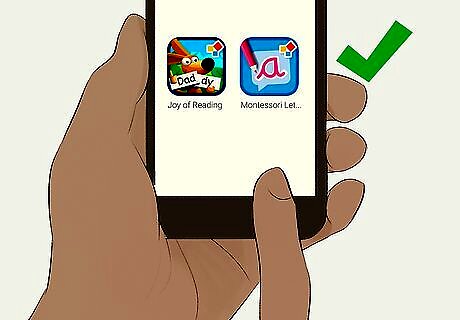
Download phonics learning apps to your phone or tablet. In addition to more traditional games, you can download phonics learning games to your smartphone or tablet. There are apps that specialize in everything from learning sounds to learning how to read. Apps like The Joy of Reading and Montessori Letter Sounds are good for kids, as they make easy, interactive games for phonics learners. Apps like Phonics Genius and abc Pocket Phonics may be helpful for adult learners.
Helping Others Learn Phonics

Read out loud. Once a learner knows the basic letter names and sounds, reading is the best tool to help them learn phonics. Read out loud every day to help your phonics learner build their skills. Make sure they can see the text as you read so that they learn to associate different letters with different sounds. Bedtime stories are a great way to incorporate reading into your daily routine. Bedtime stories are common for kids, but they can be useful for adult learners, too. Just tailor what you read to your learner’s interests. You can also read news articles, recipes, or any other daily content out loud. This not only helps with phonics, it shows your learner how important reading is to daily life.

Turn closed captions on when you watch TV. Closed captioning allows your learner to hear how different voices say different letters. Whether you’re watching a TV show, movie, or online video, turning on closed captioning allows your leaner to read along as characters speak.

Listen to your learner when they read out loud. Reading to someone is a good start, but they need practice reading for themselves, too. As your learner becomes more comfortable reading, have them take over while you sit back and listen. Offer support by helping them sound out words when they get stuck. Frame your help in a positive context. Let your learner know, “That’s can be a tricky word. Let’s sound it out together.”

Sign up for a class with an adult learner. If you’re helping an adult friend or family member learn to read, talk to them about signing up for a class together. It can be intimidating to enroll alone. Support them by offering to attend an adult literacy class with them. Talk to the course instructor in advance if you plan to attend a course with someone. They may have their own rules or restrictions regarding outside attendance and how much you can help during class. If you know an adult learner who is intimidated by a classroom environment, you can also help them sign up for online literacy courses. This may help manage some of their perceived fear and embarrassment.




















Comments
0 comment